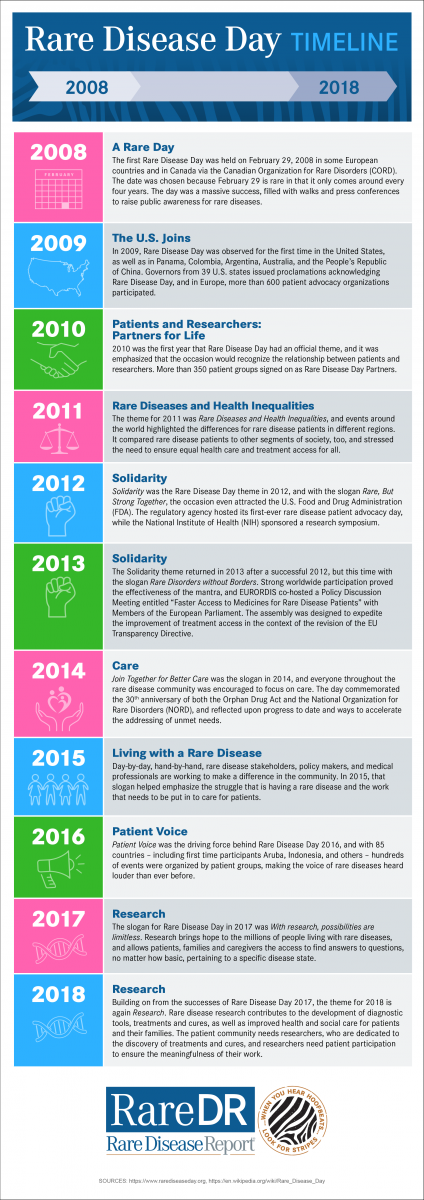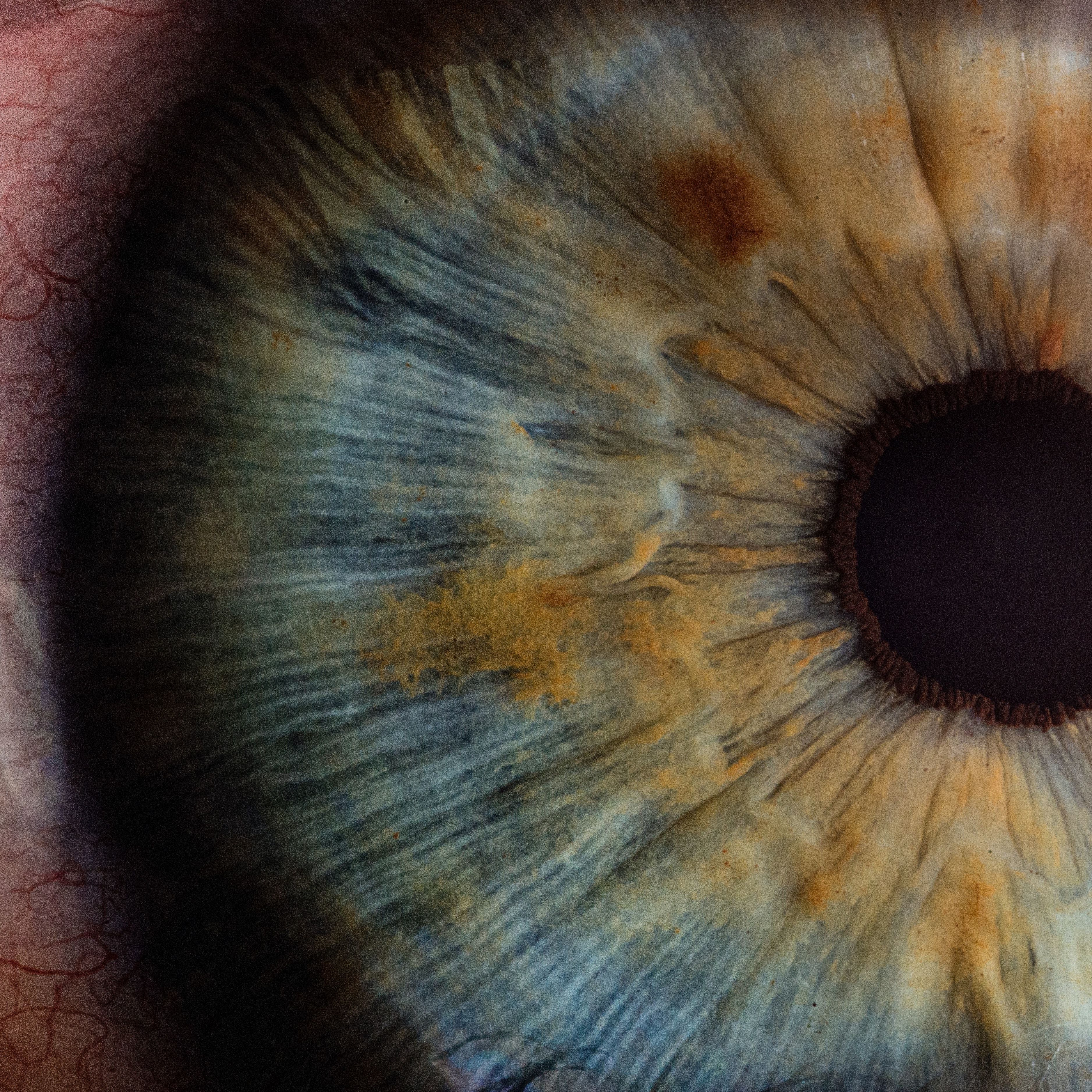Article
A Rare Disease Day Timeline [Infographic]
Author(s):
The infographic on this page will take you from the inception of Rare Disease Day to present day.
For the past 35 years, the National Organization for Rare Disorders (NORD) and the U.S. Food and Drug Administration (FDA) have been doing as much as possible to alleviate the issues and concerns plaguing the rare disease community.
Every February for the past decade, though, patients, family members, and the general public have been encouraged to join in by observing Rare Disease Day. 2018 marks the 10-year anniversary of the inaugural event, and, as always, people around the world are encouraged to raise awareness and educate those around them. The infographic below will take you from the inception of Rare Disease Day to the present.

- 2008: A Rare Day The first Rare Disease Day was held on February 29, 2008 in some European countries and in Canada via the Canadian Organization for Rare Disorders (CORD). The date was chosen because February 29 is rare in that it only comes around every four years. The day was a massive success, filled with walks and press conferences to raise public awareness for rare diseases.
- 2009: The U.S. Joins In 2009, Rare Disease Day was observed for the first time in the United States, as well as in Panama, Colombia, Argentina, Australia, and the People’s Republic of China. Governors from 39 U.S. states issued proclamations acknowledging Rare Disease Day, and in Europe, more than 600 patient advocacy organizations participated.
- 2010: Patients and Researchers: Partners for Life 2010 was the first year that Rare Disease Day had an official theme, and it was emphasized that the occasion would recognize the relationship between patients and researchers. More than 350 patient groups signed on as Rare Disease Day Partners.
- 2011: Rare Diseases and Health Inequalities The theme for 2011 was Rare Diseases and Health Inequalities, and events around the world highlighted the differences for rare disease patients around the world. It compared rare disease patients to other segments of society, too, and stressed the need to ensure equal health care and treatment access for all.
- 2012: Solidarity Solidarity was the Rare Disease Day theme in 2012, and with the slogan Rare, But Strong Together, and the occasion even attracted the U.S. Food and Drug Administration (FDA). The regulatory agency hosted its first-ever rare disease patient advocacy day, while the National Institute of Health (NIH) sponsored a research symposium.
- 2013: Solidarity The Solidarity theme returned in 2013 after a successful 2012, but this time with the slogan Rare Disorders without Borders. Strong worldwide participation proved the effectiveness of the mantra, and EURORDIS co-hosted a Policy Discussion Meeting entitled "Faster Access to Medicines for Rare Disease Patients” with Members of the European Parliament. The assembly was designed to expedite the improvement of treatment access in the context of the revision of the EU Transparency Directive.
- 2014: Care Join Together for Better Care was the slogan in 2014, and everyone throughout the rare disease community was encouraged to focus on care. The day commemorated the 30th anniversary of both the Orphan Drug Act and the National Organization for Rare Disorders (NORD), and reflected upon progress to date and ways to accelerate the addressing of unmet needs.
- 2015: Living with a Rare Disease Day-by-day, hand-by-hand, rare disease stakeholders, policy makers, and medical professionals are working to make a difference in the community. In 2015, that slogan helped emphasize the struggle that is having a rare disease and the work that needs to be put in to care for patients.
- 2016: Patient Voice Patient Voice was the driving force behind Rare Disease Day 2016, and with 85 countries — including first time participants Aruba, Indonesia, and others – hundreds of events were organized by patient groups, making the voice of rare diseases heard louder than ever before.
- 2017: Research The slogan for Rare Disease Day in 2017 was With research, possibilities are limitless. Research brings hope to the millions of people living with rare diseases, and allows patients, families and caregivers the access to find answers to questions, no matter how basic, pertaining to a specific disease state.
- 2018: Research Building on from the successes of Rare Disease Day 2017, the theme for 2018 is again Research. Rare disease research contributes to the development of diagnostic tools, treatments and cures, as well as improved health and social care for patients and their families. The patient community needs researchers, who are dedicated to the discovery of treatments and cures, and researchers need patient participation to ensure the meaningfulness of their work.
For more information on Rare Disease Day and ways that RDR is observing, be sure to follow Rare Disease Report on Facebook and Twitter.





